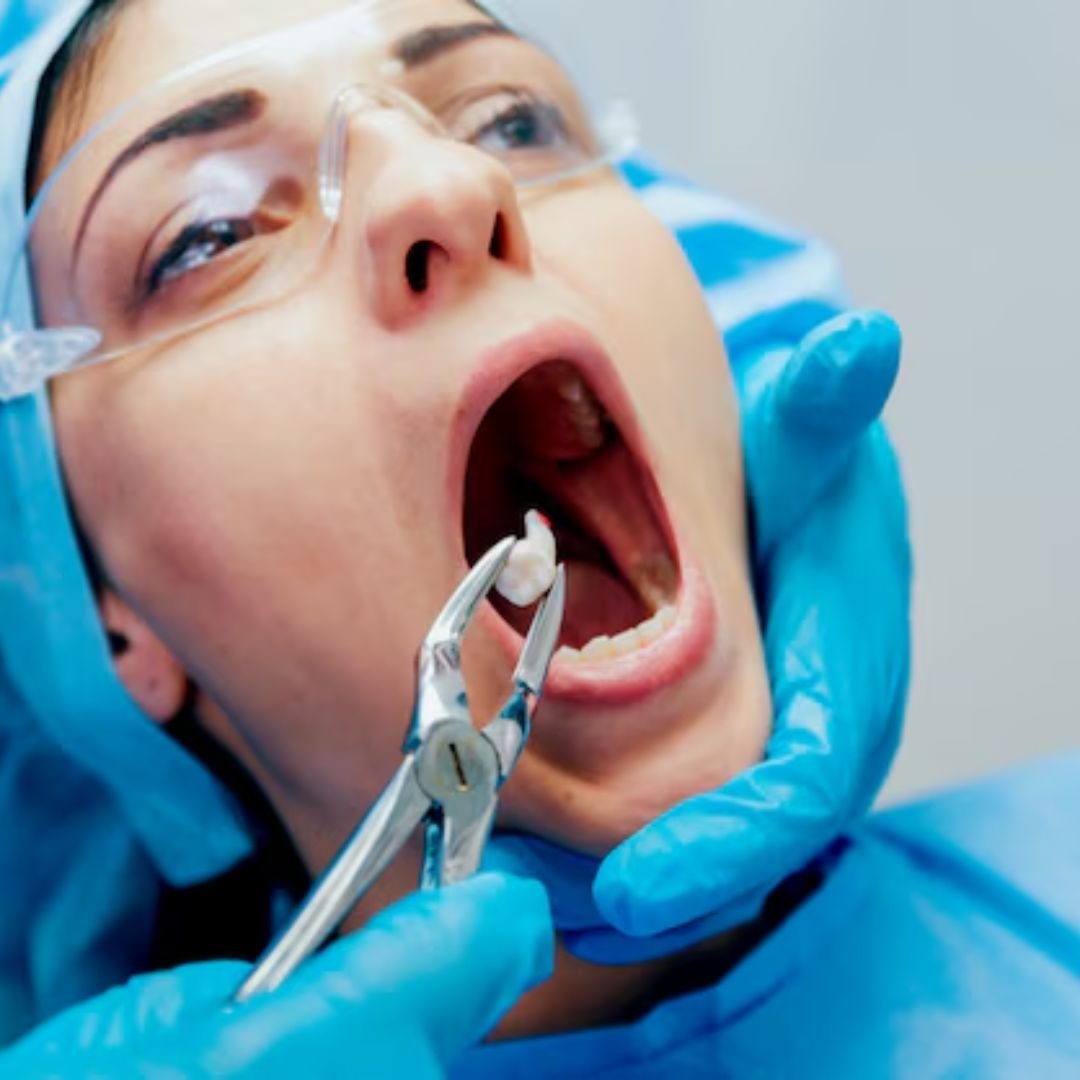A dental crown offers a strong, long-lasting treatment by restoring the appearance, shape, and function of an injured or weakened tooth. Despite their reputation for longevity, crowns eventually need to be maintained.
Have you experienced any changes or pain around your crown? Your general oral health may suffer if you ignore these signs, which could result in more issues.
Did you know that the global dental crowns and bridges market was valued at $4.02 billion in 2023 and was projected to grow from $4.24 billion in 2024 to $6.75 billion by 2032, expanding at an exponential growth rate of 6%?
This shows the number of dental crowns being sold, which highlights their popularity and necessity among people.
But how do you know when it’s time to replace a dental crown?
Let’s just explore the signs, the importance of timely replacement, and the benefits of early intervention.
What is a Dental Crown, and Why is It Important to Replace When Damaged?
A dental crown is a protective cap placed over a tooth to restore its shape, strength, size, and appearance. It is a common dental procedure that can significantly improve the function and aesthetics of your smile.
A damaged dental crown can lead to a variety of oral health problems which include-
Tooth decay: Cavities and tooth decay can result from bacteria growing beneath a broken crown. That is why one should learn about the signs of tooth decay and get it checked by a professional.
Gum Disease: Gum irritation from a loose or poorly fitting crown can result in infection and inflammation.
Tooth Sensitivity: Sensitivity may result from a broken crown exposing the tooth beneath it to extremes in temperature.
Tooth Loss: If timely treatment is not received, a severely damaged crown may eventually result in tooth loss.
Signs That You Need Replacement
When a dental crown begins to show signs of excessive wear or doesn’t fit properly, it may need replacement to protect the underlying tooth. Recognizing these signs early can help prevent further dental complications, especially if you’re considering veneers in McKinney, TX, as an additional aesthetic option.
Here are some signs to watch for:
1. Persistent Discomfort or Pain
Pain is one of the most obvious signs that a dental crown may need replacement. If you experience discomfort when chewing or notice an ache around the crowned tooth, this could indicate that it has become misaligned or that there’s an issue underneath, like decay.
Improper crown alignment is a common cause of pain after crown placement. Persistent pain should never be ignored, as it could lead to more severe issues.
2. Visible Wear and Tear
While crowns are designed to last between 5 and 15 years, they can wear down over time, especially if you clench or grind your teeth.
Although small chips or cracks might not hurt right away, they can expose the tooth beneath to microorganisms, increasing the risk of infection. Even minor wear indicates that the crown's ability to protect is weakened.
3. Receding Gum Line Around the Crown
A receding gum line around a crowned tooth can expose parts of the tooth or crown, creating pockets where bacteria can build up, increasing the risk of gum disease. Receding gums can be due to an ill-fitting crown, age, or poor oral hygiene.
It is a common reason for crown replacements, emphasizing the importance of regular dental assessments to monitor gum health.
4. Sensitivity to Hot or Cold Foods
Another indication that a crown may not be properly sealing your teeth could be due to an abrupt sensitivity from excessive cold or hot meals. The glue may deteriorate with time, leaving the exposed tooth vulnerable to temperature changes.
If you experience sudden or persistent pain when eating hot or cold foods, it may be time to have your crown checked.
5. Noticeable Odor or Bad Taste
A strange odor or taste near a crowned tooth can indicate that bacteria are accumulating beneath the crown, often because it has shifted or no longer fits securely. If not addressed, this can lead to tooth decay, infection, and gum disease.
6. Dark Line at the Gum Margin
A dark line around the gum margin is common with older porcelain-fused-to-metal (PFM) crowns, where the metal base becomes exposed due to gum recession or wear on the porcelain. While this line may not affect the crown’s functionality, it can impact the appearance of your smile. Many people replace these crowns with all-ceramic or zirconia options for a more natural look.
7. Crowns Older Than 10-15 Years
Though dental crowns can last a decade or more, they’re not meant to be permanent. Research shows crowns need replacement after 10-15 years due to wear, gum recession, or underlying tooth decay.
Advances in dental materials mean that modern crowns are often more durable and aesthetic than their predecessors, making replacement beneficial.
Benefits of Early Intervention
Identifying and addressing crown issues early offers several benefits that can save you time, discomfort, and money in the long run, especially if you’re also considering complementary cosmetic treatments like veneers in McKinney, TX.
Prevents Further Decay and Damage
Early crown replacement can prevent deterioration from spreading to adjoining or underlying teeth, lowering the need for more intricate procedures.
Reduces Treatment Complexity
Early treatment of smaller problems can prevent the need for more invasive operations, including extractions or root canals, which are sometimes necessary if decay spreads beneath a damaged crown.
Maintain Tooth Structure
The original tooth structure must be preserved for the best possible dental health. Early teeth management can better protect the crowned tooth and avoid additional loss or damage.
Protects Surrounding Teeth
A decaying crown may expose adjacent teeth to harm or infection. However, by replacing a crown on time, the integrity of the surrounding teeth and gums can be preserved.
Conclusion
Regularly assessing your dental crowns is key to maintaining optimal oral health. If you notice any of these signs, timely replacement can prevent further complications.
Visit Valley Creek to consult a professional who can help you maintain a healthy, confident smile with expert care.















